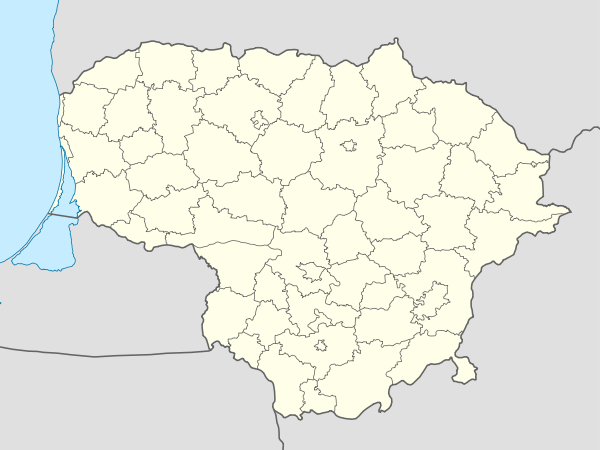Punia, Lithuania
| Punia | ||
|---|---|---|
| Village | ||
| ||
 Punia Location of Punia | ||
| Coordinates: 54°30′47″N 24°06′01″E / 54.51306°N 24.10028°ECoordinates: 54°30′47″N 24°06′01″E / 54.51306°N 24.10028°E | ||
| Country |
| |
| Ethnographic region | Dzūkija | |
| County |
| |
| Municipality | Alytus district municipality | |
| Eldership | Punia eldership | |
| Capital of | Punia eldership | |
| First mentioned | 1382 | |
| Population (2001) | ||
| • Total | 809 | |
| Time zone | EET (UTC+2) | |
| • Summer (DST) | EEST (UTC+3) | |


Punia is a historic village in the Alytus district municipality, Lithuania. Situated on the right bank of the Neman River, it has a population of about 800. It was an important early city of the Grand Duchy of Lithuania.
History
The town was first mentioned in 1382. The first church was built in 1425, likely by Vytautas the Great. Because of its good geographical location (Neman River, direct route to Trakai), Punia became a local center. In 1503 the town received Magdeburg rights and was promoted to city status. In the 17th century the city reached its peak, and became known for its pottery and smithery. In 1688 the third church was built. At the beginning of the 18th century, Punia suffered a great deal of damage from the Swedish wars, and did not recover until the end of the century. In 1785 a town hall was built. During the middle of the 19th century Jews settled in the town, developing trade and helping the town recover from two large fires. After the second fire a new brick church replaced the old wooden church. By 1866 the number of residents had almost doubled since 1833, reaching 1,000. Punia suffered from another major fire, the World Wars, Soviet repressions and by 1939 it had only about 200 residents left. It recovered a bit only in the 1960s, when it became the administrative center of the local kolkhoz.
Punia is proud of the Hill of Margiris (Lithuanian: Margirio kalnas, 30 metres high), one of the largest hill forts in Lithuania, in the bend of the Neman River. It is believed to be the location of legendary Pilėnai which was destroyed in 1336 by the Teutonic Knights. The heroic defence of the castle is described by Władysław Syrokomla in his poetic novel "Margier". The castle was rebuilt in 16th century only to be soon destroyed again.
External links
| Wikimedia Commons has media related to Punia. |
- (Lithuanian) Unofficial Punia town website
- (Lithuanian) Reconstruction of Punia Castle

